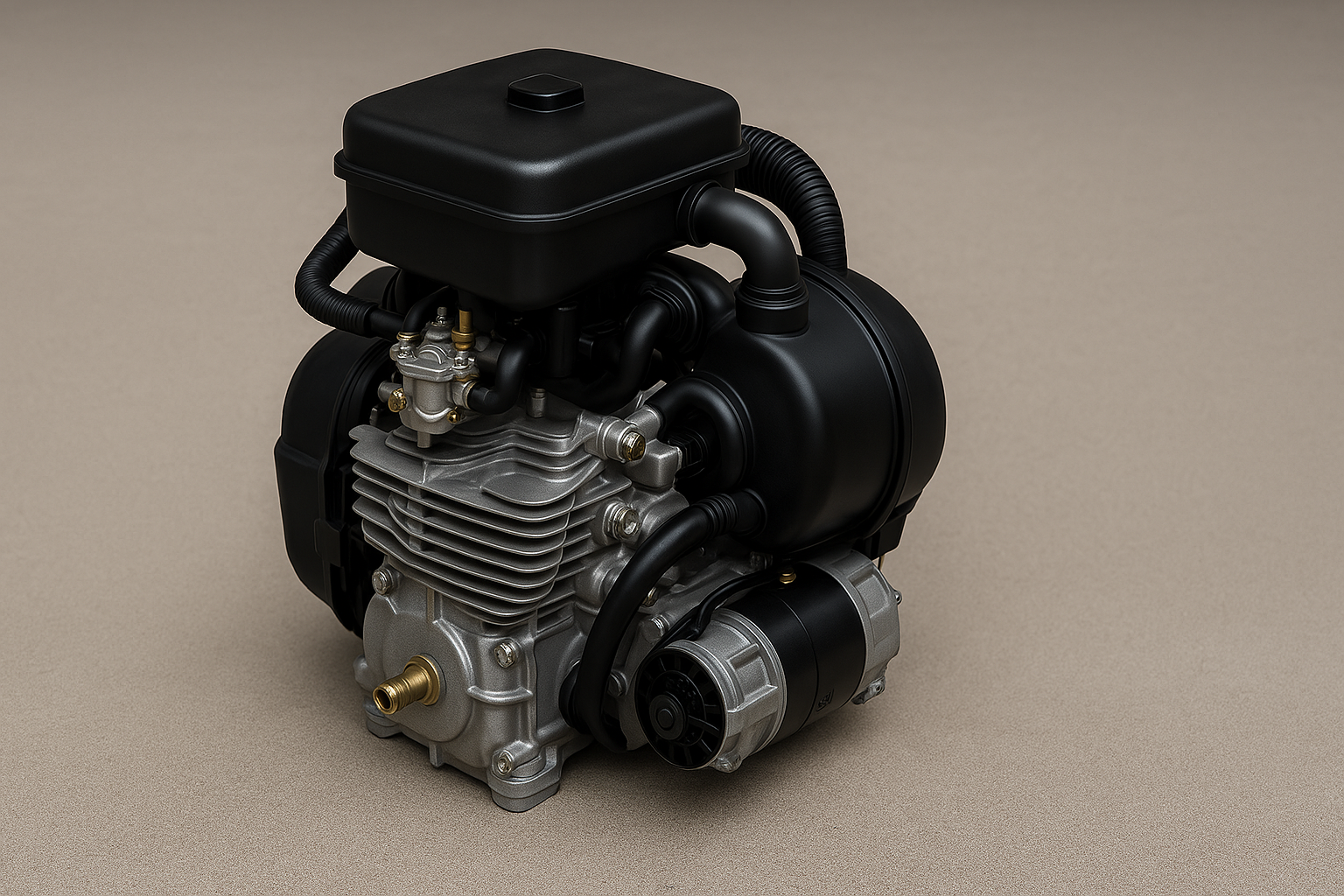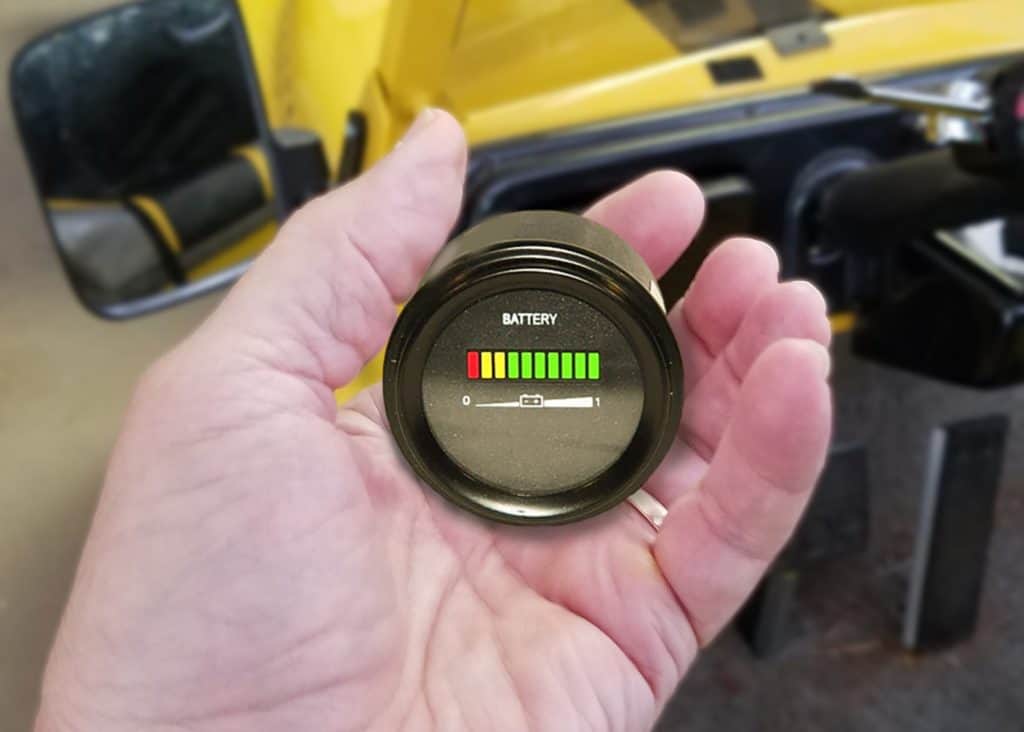Owning a golf cart means dealing with inevitable wear and tear, especially when it comes to brake performance. While often overlooked, the state of your brakes can significantly impact your vehicle’s overall efficiency.
This post offers step-by-step instructions on how to replace golf cart brakes and maintain them for optimal performance. Don’t let faulty brakes for golf carts slow you down; read on to learn how to take charge of your cart’s upkeep!
Understanding Golf Cart Brakes and Their Maintenance
Golf cart brakes work by applying pressure to the wheels, causing them to slow down or come to a complete stop.
How Golf Cart Brakes Work, Including Mechanical Brake Systems
Golf cart brakes function in a manner similar to those found in conventional vehicles, encompassing both hydraulic and mechanical components. The process begins with the foot pedal, which triggers a system utilizing hydraulic pressure or mechanical force, depending on the cart’s design and make.
In hydraulic systems, when you press the brake pedal, it activates a hydraulic system that relies on brake fluid to generate pressure. This pressure is then transmitted to the brake shoes positioned inside the drum located at each wheel hub. The brake shoes, upon encountering the spinning drums, apply friction, resulting in the gradual deceleration and eventual halt of your golf cart in a smooth and secure manner.
On the other hand, mechanical brake systems utilize mechanical linkages, levers, and cables to engage the brakes. When the brake pedal is depressed, these mechanical components engage the brake shoes against the drums, creating friction and causing the cart to slow down and stop.
Signs of Brake Wear and Maintenance Needs
Regular inspection of the brake system is crucial to identify signs of brake wear and maintenance needs. One common sign that your golf cart brakes may need attention is noticeable wear on the brake components.
This could include worn-out brake pads, which can be seen by checking the thickness of the pad material. Another indication is a decrease in braking performance, such as longer stopping distances or a spongy feeling when applying the brakes.
Additionally, if you notice any unusual noises like squeaking or grinding coming from the brakes, it’s important to address these issues promptly. Remember to inspect your golf cart brakes regularly to ensure they are functioning properly and make any necessary adjustments or replacements for optimal performance.
Steps to Maintain and Adjust Golf Cart Brakes
To maintain and adjust golf cart brakes, start by cleaning and inspecting the brakes to remove any dirt or debris that may affect their performance. Then, adjust the brake shoes and drums to ensure they are properly aligned for optimal braking.
Finally, bleed the brakes to remove any air bubbles and improve overall brake function.
Cleaning and Inspecting Brakes
Regularly cleaning and inspecting your golf cart brakes is vital for maintaining optimal performance. Start by disengaging the brake system, removing your foot from the pedal without coming to a complete stop.
Then, use an aerosol brake parts cleaner and a clean rag soaked in WD-40 to remove dust and rust from the brake shoe metal parts, keeping the pads protected and masked off.
Remember, regular inspection of all brake components including pads, drums, and cables is crucial for ensuring proper functioning.
Adjusting Brake Shoes and Drums
To ensure optimal performance, it is important to adjust the brake shoes and drums on your golf cart. Regular adjustment of these components helps maintain proper functionality and prevents excessive wear.
Start by removing the wheel hub and inspecting the brake shoes for any signs of damage or uneven wear. Using a brake spoon, adjust the star wheel until there is slight resistance when spinning the drum.
Repeat this process for all wheels before reattaching the wheel hubs and tightening the lug nuts securely. By adjusting your brake shoes and drums regularly, you can help keep your golf cart’s braking system in top shape.
Bleeding Brakes on Hydraulic Systems
To ensure optimal performance of your golf cart brakes, it is important to bleed them periodically. Bleeding the brakes involves removing any air bubbles that may have entered the brake lines.
This process helps maintain proper braking power and responsiveness. To bleed your golf cart brakes, start by locating the bleeder screws on each wheel. Then, attach a clear plastic tube to each bleeder screw and place the other end in a container filled with brake fluid.
Next, have someone press down on the brake pedal while you open and close the bleeder screw to release any trapped air or fluid. Repeat this process for each wheel until all air bubbles are eliminated and clean fluid comes out consistently from each screw.
How to Replace Golf Cart Brakes
To replace golf cart brakes, start by removing the old brake pads and shoes from the brake system.
Removing Old Brake Pads and Shoes
To remove old brake pads and shoes from your golf cart, start by lifting the cart’s rear end off the ground using a jack or lift. Then, take off the lug nuts to remove the wheels. Next, locate the brake drum on each wheel and carefully slide it off.
Once removed, you can access the old brake pads and shoes inside. Take note of their position before removing them completely. Remember to inspect for any signs of wear or damage while you have them out.
Installing New Brake Pads and Shoes
To install new brake pads and shoes on your golf cart, begin by removing the old brake pads and shoes. This can usually be done by loosening the retaining bolts or pins that hold them in place.
Once they are removed, take the opportunity to inspect the brake drums and clean any debris or rust from them. Next, install the new brake pads and shoes onto their respective positions, making sure they are properly aligned.
Finally, secure them in place with the retaining bolts or pins. Testing and adjusting your new brakes is important to ensure proper functionality.
Testing and Adjusting New Brakes
To ensure the optimal performance of your newly installed golf cart brakes, it is crucial to thoroughly test and adjust them. Start by applying gradual pressure to the brake pedal while driving at a safe speed.
This will help you evaluate if the brakes engage smoothly or if they feel too sensitive or unresponsive. If adjustments are needed, refer to your golf cart’s manual for instructions on how to fine-tune the brake shoes and drums.
Regular testing and adjustment of new brakes will keep them in top shape for a reliable braking experience on the golf course or wherever you ride your cart.
Troubleshooting Common Golf Cart Brake Issues
If you’re experiencing issues like brakes locking up, squeaking brakes, or poor brake performance, this section will help you troubleshoot and fix these problems. Keep reading to ensure your golf cart’s brakes are in top condition for optimal performance on the course.
The golf cart brakes not working is a common issue faced by golfers and golf course staff. When the brakes fail to engage, it poses a significant safety risk on the course. Golf carts are an essential mode of transportation for players, allowing them to easily travel between holes. However, when the brakes malfunction, it becomes challenging to control the cart’s speed and stop in a timely manner. This can lead to accidents, collisions with other carts or objects, and potential injuries. Golf courses must ensure regular maintenance and inspections of their fleet to prevent such incidents and guarantee the safety of both golfers and staff.
Brakes Locking Up
Brakes locking up can be a frustrating issue when driving your golf cart. This happens when the brakes are suddenly applied and remain stuck in the engaged position, causing the wheels to lock.
One possible cause of this problem is a malfunctioning brake caliper or wheel cylinder that fails to release the pressure on the brake pads or shoes. Another potential culprit could be contaminated brake fluid, which can lead to uneven braking force distribution and cause the brakes to seize up.
On mechanical cable brake systems, check for a binding or kinked cable…ensure the linkages all moves smoothly with no difficulty.
Performing regular inspections of your brake system, including checking for worn-out components and keeping an eye on the condition of your brake fluid, can help prevent this issue from occurring.
Squeaking Brakes
If you notice that your golf cart brakes are squeaking, it could be a sign of worn-out brake pads or shoes. This noise occurs when the brake pad material starts to wear down, causing metal-to-metal contact between the pad and the drum.
To address this issue, you will need to replace the old brake pads or shoes with new ones. By doing so, you can ensure that your golf cart brakes perform optimally and provide smooth stopping power without any annoying noises.
Regular inspection and timely replacement of worn-out brake components are essential for maintaining safe and reliable braking performance in your golf cart.
Poor Brake Performance
If you notice poor brake performance on your golf cart, it’s essential to address the issue promptly for optimal safety. Poor brake performance can occur due to various reasons. One common cause is worn-out brake pads, which may reduce their ability to grip the rotors effectively.
Another factor could be a decrease in brake fluid levels or air bubbles in the system, leading to spongy brakes or decreased responsiveness. Additionally, damaged or misadjusted drums and cables can also contribute to poor brake performance.
Regular inspection and maintenance of your golf cart’s braking system are crucial to ensure that it functions properly and provides reliable stopping power when needed.
Conclusion
Maintaining and replacing golf cart brakes is crucial for optimal performance. By regularly inspecting and cleaning the brake system, adjusting brake pads and drums, and replacing worn-out components when necessary, you can ensure that your golf cart stops smoothly and reliably.
Don’t neglect this important maintenance task to enjoy a safe and enjoyable ride on the course or around your neighborhood.
FAQs
How often should I maintain the brakes on my golf cart?
It is recommended to regularly inspect and maintain the brakes on your golf cart every 6-12 months, or more frequently if you notice any signs of wear or decreased performance.
What are some signs that my golf cart brakes need replacement?
Signs that your golf cart brakes may need replacement include squeaking or grinding noises, reduced stopping power, vibrations when braking, or a soft brake pedal.
Can I replace the brakes on my golf cart myself?
Yes, you can replace the brakes on your golf cart yourself with basic tools and mechanical knowledge. However, it’s important to follow the manufacturer’s instructions and safety guidelines for proper installation.
How do I properly maintain and care for my golf cart’s brake system?
To maintain and care for your golf cart’s brake system, regularly check brake fluid levels, clean off dirt and debris from calipers and rotors, adjust brake shoes as needed, and perform regular inspections for wear or damage.






Leave a Reply